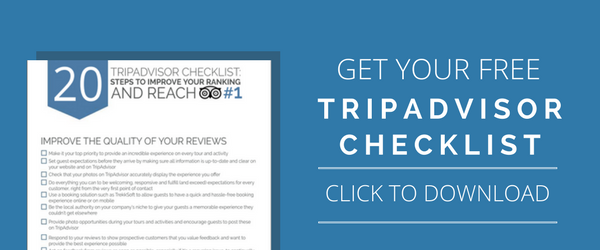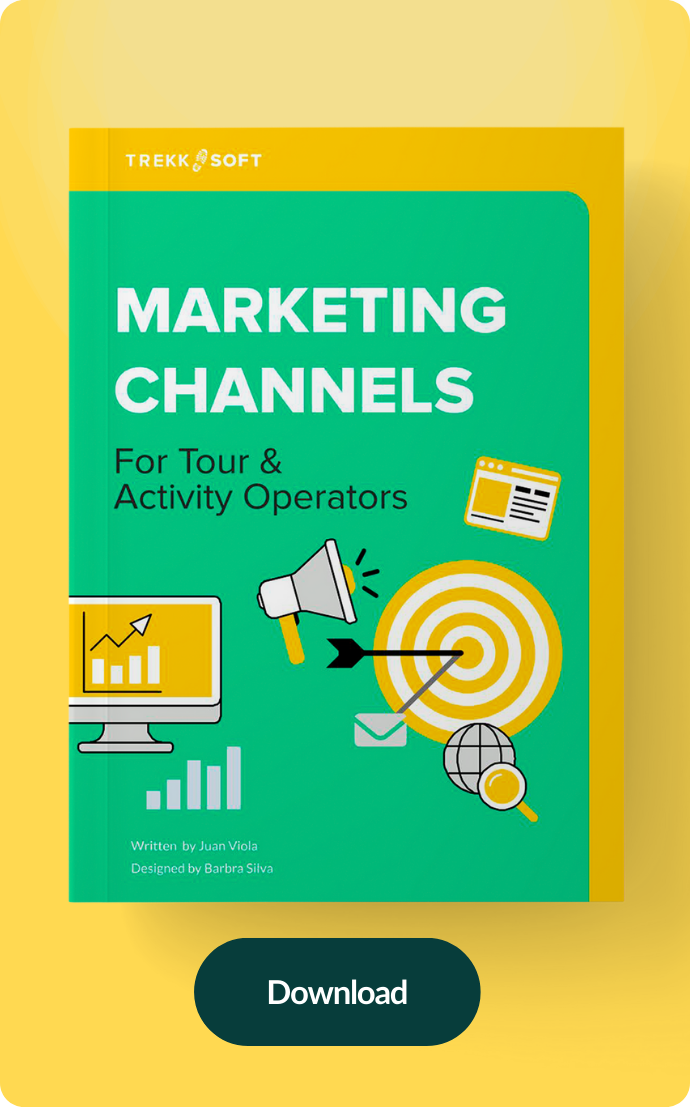This article has been updated in February 2023 to include more current data and information.
Reviews are a vital part of a customer's booking journey. According to a survey from Tripadvisor, 3 out of 4 respondents expressed that online reviews were "extremely or very important" when making travel decisions.
The opinions of other travelers help in planning and decision-making.
Going to an unknown location and getting out of their comfort zones is something travelers are ready to experience, but managing some things, such as the tours and activities they want to do, helps them feel more comfortable and confident about their decisions.
Tour operators regularly ask us, 'How can I get more reviews?' Here are 6 simple tips that are proven to work:
1. Ask customers during your tours
Asking for reviews is about timing. An excellent opportunity to collect reviews is before the end of your tour while heading back to the drop point, or on the wrapping-up talk guides give at the end of the tour. Also, allowing travelers to provide comments or feedback face-to-face can help avoid negative posts.
Keep in mind that you need to provide the link. You can have business cards for your tour guides with the TripAdvisor page link or QR codes. The easier you make it, the more reviews you will get!

2. Get your company on relevant review platforms
Whether you're starting your business or are already a renowned company, the best strategy for taking the best of the reviews is to work with the review websites that communicate best with your travelers.
Where is your customer base located, and what websites are they using? TripAdvisor is the most visible platform for the tourism industry to collect reviews, but there should be other websites. The Asian market uses the marketplace Klook, while in the US, you can ask for reviews on Yelp!. While your location and customers can influence the marketplaces you'll be working with, there are some worldwide you can work with:
Google My Business
Tour operators that want a solid online presence should have their business on Google. Travelers want to find relevant information, including location, contact information, rating, and reviews from previous travelers that had experienced the tour or activity.
Facebook Business
Connecting your customers on social media can help build trust and a strong relationship. Travelers can leave comments and share if they recommend your business or not.
Expedia Local Expert
One of the largest OTAs, Expedia, provides many travel services, such as flights, hotels, tours, and activities.
Other websites to consider collecting reviews include marketplaces, review websites, social media accounts, and your own website.
Read: If not on TripAdvisor, which alternative platforms should you collect reviews on?
3. Reward your guides
Tour guides are your business's face and can make or break a customer's experience. They should start each tour by introducing themselves and learning more about their group. By the end of the trip, customers will have a good relationship with their guide and will be happy to share feedback and praise on their behalf. Your tour guides should feel comfortable asking guests for this, especially if it mentions their names. People relate to people, and being asked by a person rather than an email will result better.
If you require more online reviews or need a way to keep your team motivated during the busier periods, I recommend putting together an incentive plan for your team. This could be each 5* review posted that mentions the team member by name will be rewarded with a cash incentive, prize, or time-back. It could be a running competition for the highest number of reviews per month.
Read: How to conduct mid-season reviews with your guides

4. Email within 24 hours of their trip
A follow-up email to ask for a customer review should be sent 0-24 hours after your tour. If you wait longer, they could already be on another tour and immersed in a new experience. They might also forget import elements they enjoyed about their trip.
When writing a follow-up email, keep it personal and true to the brand. You could say 'Hi Jessica, We want to share our amazing tour experience with more people. Can you help by posting a review?'. Another technique I've seen work if you'd like to collect more detailed feedback is to ask 3-4 customer survey questions you'd like to know from your customers. When you receive a response, you can send a personalized message to say that you are delighted with the feedback and if they could post this on your preferred review website. For ease, include a link to the page where to post.
When contacted after 24 hours works:
If you have customers who have yet to post a review after you asked, you can do a blitz email. This will not provide the highest response rate, but it will help if you have a reason for asking for these reviews. This could be if you have been nominated for an award or have launched a new tour.
5. Show that appreciate feedback
Once you receive customer reviews, it is just as important that your business posts a considered response. Not only does it show the customer your appreciation for the review, but it is also important for potential new customers to get a good impression of your business. Remember that customers can include, depending on the platform they choose, a title, rating, photos, videos, and long descriptions of their experience so that you can appreciate their time.
Never underestimate the value of an excellent review. When you receive great reviews, share them with others. At TrekkSoft, we include customer feedback on our website, emails, and social media.
Read: How to integrate TripAdvisor reviews with your TrekkSoft account
6. Replying bad reviews
Reviews are independent and subjective, so you can't control what they will say so; that every business will experience a bad review once in a while, and not replying to them can even be costly - according to Online Reputation Management, one bad review can cost a business up to 30 customers.
So what to do when you receive a negative review?
This is your opportunity to add your voice and explanation. Keep responses professional, reference any negative or constructive feedback, and explain what you have changed or intend to do to improve the experience for others. Keep in mind that customers expect a fast response, so take your time to build a proper response, but take at most a week.
Read how to manage negative customer reviews for more insights about replying to feedback.
Download this free checklist with 2 steps to improve your TripAdvisor ranking and reach #1




